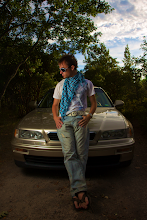Social Networking Site: Gaia
Gaia is a social networking service for anime (japanese cartoon animation) enthusiasts. Gaia is similar to yoville in that you have an avatar, and it is a game-like environment, but more social.
The goals in Gaia are to get gold, and to buy clothing and accessories for your avatar. The more gold you have, the more things you can buy for your avatar... and the more rare the items are that you have, the more that people will talk to you in the avatar world. Your membership is either through email or through facebook.

The way to earn gold is by doing lots of various things. Gold revenue activities include posting on a forum, starting a popular thread, just surfing around the forums, playing games like pinball, or an assortment of other mini-games.

The system keeps people engaged and encourages social interaction. The forum topics are about anything and everything... from fashion to art, technology chatter to in-game tips. They get people to visit on a regular basis by giving maximum gold rewards for activity on a new day.. basically.. if you do a lot of interacting on one day, you'll probably get less gold than doing a little interaction over a few days.
Communicating with other people can be either through the forum, or in the avatar world with word bubbles above their cartoon heads.
Gaia is obviously more of a game-oriented site than other social-networking sites, but much like the popularity of farmville, it attracts users for more than just the social interaction.
I think that social networks will eventually include GPS positioning, letting your network of friends/contact know where you are at all times. A lot of new phones already include GPS capabilities, and the ability to tie your current position to approved software.
I also think that it is likely that social networking will be more automatic. For example: say I am shopping in target. My phone will be able to tell that I am in target based on my GPS location, and will be able to update my profile with a message on the profile page like "Kevin is shopping at target in San Francisco." As much as I would be weary to give out such information for privacy reasons, I think that it would become very popular especially with the upcoming generation of teenagers.
New marketing strategies may also be formed by mobile social networking. Listing off favorite restaurants on your profile may link you to promotions that are tailored to bringing people nearby the business into the business.
Another possibility is to have new recommended friends by who you are geographically near on a regular basis. This would mean that coworkers and classmates would show up on your recommended contacts list based in your proximity to them.







